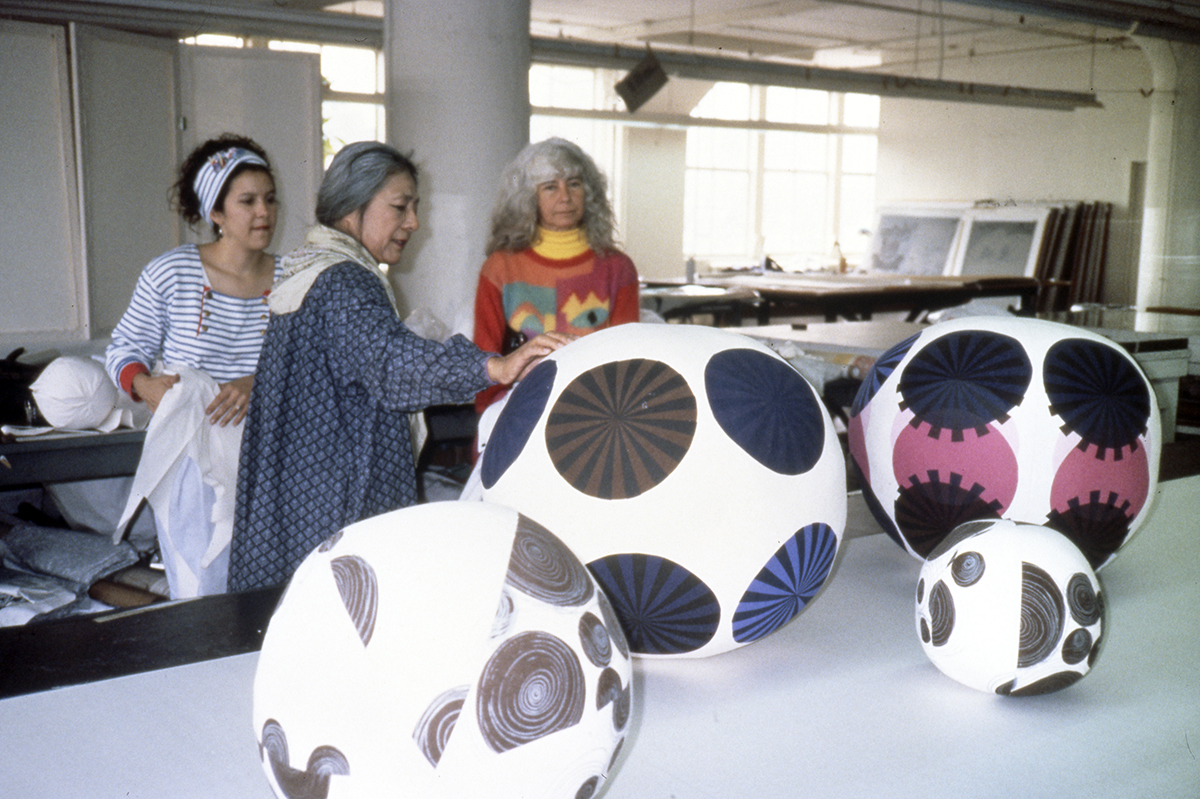Toshiko Takaezu (1922–2011) was a forerunner among a generation of artists who began to complicate the distinction between “art” and “craft” in the post-WWII United States. Perhaps best known for her Moon series of sphere-shaped vessels, Takaezu explored the sculptural and conceptual possibilities inherent within the medium of ceramics. By developing the “closed form”—in which only the smallest of holes was left in her ceramics in order to facilitate the firing process—Takaezu placed her work in dialogue with her interests in self-discovery and the integration of art, life, and the natural environment. She closely studied and emulated traditional Japanese art and culture in her work, inspired in particular by Zen Buddhism and the tea ceremony.
Takaezu took her 1989–1991 residency at FWM as an opportunity to revisit printmaking, which she had briefly experimented with earlier in her career. During her residency, Takaezu developed an editioned series of Moon Balls—soft sculptures evoking the shape of her Moon vessels—and two prototypes for garments. Working with the FWM Studio staff, Takaezu adapted her usual painterly style to the requirements of the printmaking process, which favors sharp delineations between colors. Instead of creating motion through gestural abstraction, she established a sense of movement in her two-dimensional graphics through the layering of shapes over one another. To create one of her garment prototypes, Takaezu also experimented with frottage, a rubbing technique, in order to ultimately transfer the texture of clay onto fabric through a multi-step screenprinting process. For another jacket prototype, she designed a print featuring spiral-shaped “endless circles.” This design references the concept of the endless circle in Zen Buddhism, which represents the cyclical nature of birth, death, and rebirth.
Based primarily at her studio in Quakertown, NJ, Takaezu continued to expand her practice in the years following her residency at FWM. She began experimenting with bronze casting at the Seward Johnson Atelier in Trenton, NJ in the latter part of her career and, signaling her interest in the integration of form and sound—which she had long explored by placing small, rattling pieces of clay inside of her closed vessels—she produced a number of bronze bells. One of these bells is now in the collection of the Philadelphia Museum of Art. From 1999–2000, Takaezu created her largest ceramic works: 14 pieces, known as her Star Series, that each range from 46 to 68 inches tall and are installed together or in small groupings to create an environment for the visitor to experience.
Learn More
Unpacking Our Stories, Episode 2: Toshiko Takaezu
In this pre-recorded conversation, Aleesa Pitchamarn Alexander, Shino Takeda, Karen Patterson, and Christina Roberts delve into Takaezu’s embrace of new materials during her residency at FWM, the artist’s contributions to the field, and continuing influence.

